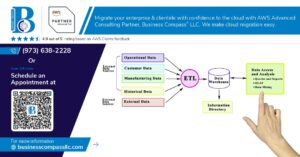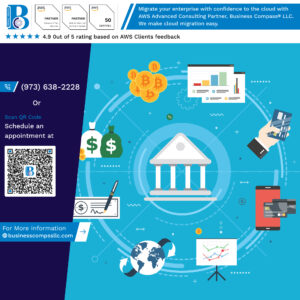Is your codebase a tangled mess of dependencies and tightly coupled components? Are you struggling to adapt to new frameworks or technologies without a complete overhaul? 🤔 If so, you’re not alone. Many developers find themselves trapped in a web of rigid, inflexible code that’s difficult to maintain and scale.
Enter Clean Architecture – the game-changing approach that promises to liberate your codebase from framework constraints and keep it flexible, maintainable, and testable. 🚀 By separating concerns and enforcing clear boundaries between layers, Clean Architecture empowers you to create software that’s not only easier to work with but also more resilient to change.
In this comprehensive guide, we’ll dive deep into the world of Clean Architecture, exploring its core principles, implementation strategies, and real-world applications. From understanding the fundamental components to overcoming common challenges, we’ll equip you with the knowledge and tools you need to master this powerful architectural pattern. So, are you ready to transform your codebase and take your software development skills to the next level? Let’s begin our journey into the realm of Clean Architecture! 💻✨
Understanding Clean Architecture
A. Defining clean architecture and its principles
Clean architecture is a software design philosophy that emphasizes separation of concerns and dependency inversion. It aims to create systems that are:
- Independent of frameworks
- Testable
- Independent of the UI
- Independent of the database
- Independent of any external agency
The core principles of clean architecture include:
- Separation of concerns
- Dependency inversion
- Single responsibility
- Open-closed principle
- Interface segregation
Here’s a table summarizing the key layers in clean architecture:
| Layer | Description | Responsibility |
|---|---|---|
| Entities | Core business logic | Define business rules and data structures |
| Use Cases | Application-specific business rules | Orchestrate the flow of data and entities |
| Interface Adapters | Convert data between use cases and external agencies | Adapt external data to internal formats |
| Frameworks & Drivers | External frameworks and tools | Interact with the outside world |
B. Benefits of a flexible codebase
A flexible codebase offers numerous advantages:
- Easier maintenance
- Faster feature development
- Improved testability
- Reduced technical debt
- Better scalability
These benefits lead to:
- Increased developer productivity
- Lower long-term costs
- Higher software quality
- Easier onboarding for new team members
C. The importance of framework independence
Framework independence is crucial for long-term sustainability of a project. It allows:
- Easy migration to new frameworks
- Focused business logic development
- Improved testability of core components
- Reduced vendor lock-in
By keeping the core business logic separate from framework-specific code, you create a more resilient and adaptable system. This approach aligns with the principles of clean architecture, ensuring that your codebase remains flexible and maintainable over time.
Now that we’ve covered the fundamentals of clean architecture, let’s explore its core components in more detail.
Core Components of Clean Architecture
A. Entities: Business objects and logic
Entities form the core of Clean Architecture, representing the fundamental business objects and logic of your application. These are the most stable and least likely to change components, encapsulating critical business rules and data structures.
Key characteristics of entities include:
- Independence from external frameworks
- Contain essential business logic
- Represent core concepts in the domain
Here’s a simple example of an entity in a banking application:
class Account:
def __init__(self, account_number, balance):
self.account_number = account_number
self.balance = balance
def deposit(self, amount):
self.balance += amount
def withdraw(self, amount):
if self.balance >= amount:
self.balance -= amount
return True
return False
B. Use Cases: Application-specific business rules
Use Cases, also known as Interactors, define the application-specific business rules. They orchestrate the flow of data to and from entities and direct those entities to use their business rules to achieve the use case.
Characteristics of Use Cases:
- Implement application-specific business rules
- Orchestrate data flow between entities
- Independent of UI, database, or any external agency
| Use Case Component | Responsibility |
|---|---|
| Input Port | Defines input data structure |
| Output Port | Specifies output data format |
| Interactor | Contains business logic |
C. Interface Adapters: Presenting data and handling external systems
Interface Adapters act as a bridge between the Use Cases and external agencies like databases, web services, or user interfaces. They convert data from the format most convenient for entities and use cases to the format most convenient for external agencies.
Key responsibilities:
- Adapt data between internal and external formats
- Handle presentation logic
- Manage communication with external systems
D. Frameworks and Drivers: External tools and databases
This outermost layer consists of frameworks, tools, and delivery mechanisms. It’s where all the details go: web frameworks, database systems, UI frameworks, etc. This layer should contain only glue code that connects the more abstract inner circles to the concrete tools of the external world.
Now that we’ve covered the core components of Clean Architecture, let’s explore how to implement these principles in your project effectively.
Implementing Clean Architecture in Your Project
Structuring your codebase for clarity
When implementing Clean Architecture, structuring your codebase for clarity is crucial. Start by organizing your project into distinct layers:
- Entities
- Use Cases
- Interface Adapters
- Frameworks and Drivers
This structure ensures separation of concerns and makes your codebase more manageable. Here’s a comparison of traditional vs. Clean Architecture structure:
| Traditional Structure | Clean Architecture Structure |
|---|---|
| Models | Entities |
| Controllers | Use Cases |
| Views | Interface Adapters |
| External Libraries | Frameworks and Drivers |
Establishing clear boundaries between layers
To maintain the integrity of Clean Architecture, it’s essential to establish clear boundaries between layers. This can be achieved by:
- Using interfaces to define contracts between layers
- Implementing dependency injection to manage dependencies
- Avoiding direct dependencies on external frameworks in core layers
Applying dependency inversion principle
The Dependency Inversion Principle (DIP) is a cornerstone of Clean Architecture. To apply DIP:
- Define abstractions (interfaces) in your core layers
- Implement these abstractions in outer layers
- Use dependency injection to provide concrete implementations
This approach ensures that your core business logic remains independent of external concerns.
Creating abstraction layers for external dependencies
To keep your codebase flexible and framework-free, create abstraction layers for external dependencies. This involves:
- Defining interfaces for external services in your core layers
- Implementing these interfaces in the outer layers
- Using adapters to bridge the gap between your abstractions and concrete implementations
By following these steps, you’ll create a codebase that’s not only clean but also highly adaptable to change. Next, we’ll explore best practices for maintaining Clean Architecture in your projects.
Best Practices for Maintaining Clean Architecture
Writing testable code
Writing testable code is crucial for maintaining clean architecture. Here are some key practices:
- Dependency Injection: Use DI to decouple components and make them easier to test in isolation.
- Single Responsibility Principle: Ensure each class or module has only one reason to change.
- Small, focused methods: Write methods that do one thing well, making them easier to test and understand.
- Avoid global state: Minimize the use of global variables or singletons that can complicate testing.
| Practice | Benefit |
|---|---|
| Dependency Injection | Easier mocking and isolation of components |
| Single Responsibility | Simplified testing of individual units |
| Small methods | Increased test coverage and readability |
| Avoiding global state | Reduced test interdependencies |
Adhering to SOLID principles
SOLID principles are fundamental to clean architecture:
- Single Responsibility Principle (SRP)
- Open-Closed Principle (OCP)
- Liskov Substitution Principle (LSP)
- Interface Segregation Principle (ISP)
- Dependency Inversion Principle (DIP)
Adhering to these principles ensures your code remains flexible, maintainable, and scalable.
Avoiding premature optimization
Focus on writing clean, readable code first. Optimize only when necessary:
- Profile your code to identify actual bottlenecks
- Measure performance impacts before and after optimization
- Document optimizations for future reference
Regularly refactoring and reviewing code
Continuous improvement is key to maintaining clean architecture:
- Schedule regular code reviews
- Use static analysis tools to identify code smells
- Refactor incrementally to avoid introducing bugs
- Foster a culture of collective code ownership
By following these best practices, you’ll ensure your codebase remains flexible and maintainable over time. Next, we’ll explore common challenges you might face when implementing clean architecture and how to overcome them.
Overcoming Common Challenges
Managing complexity in large projects
When implementing clean architecture in large-scale projects, managing complexity becomes a crucial challenge. To address this, consider the following strategies:
- Modularization
- Clear boundaries between layers
- Consistent naming conventions
- Comprehensive documentation
Here’s a comparison of approaches to manage complexity:
| Approach | Benefits | Challenges |
|---|---|---|
| Modularization | Easier maintenance, better scalability | Initial setup time, potential over-engineering |
| Clear boundaries | Improved testability, reduced coupling | Steeper learning curve for new team members |
| Naming conventions | Enhanced code readability, easier navigation | Requires team-wide agreement and adherence |
| Documentation | Better knowledge transfer, easier onboarding | Time-consuming, needs regular updates |
Balancing flexibility with development speed
Achieving the right balance between flexibility and development speed is crucial for successful implementation of clean architecture. To maintain this balance:
- Prioritize core domain logic
- Use dependency injection for easier testing and maintenance
- Implement automated testing to catch issues early
- Leverage code generation tools for boilerplate code
Educating team members on clean architecture principles
Ensure all team members understand and apply clean architecture principles by:
- Conducting regular training sessions
- Implementing pair programming practices
- Creating a comprehensive style guide
- Encouraging code reviews focused on architectural principles
Migrating existing projects to clean architecture
When transitioning legacy projects to clean architecture:
- Start with a thorough analysis of the existing codebase
- Identify and prioritize areas for refactoring
- Implement changes incrementally to minimize disruption
- Use feature flags to gradually introduce new architecture
By addressing these common challenges, teams can successfully implement and maintain clean architecture in their projects, resulting in more flexible and maintainable codebases. Next, we’ll explore the tools and techniques that can further support clean architecture implementation.
Tools and Techniques for Clean Architecture
Dependency injection frameworks
Dependency injection (DI) frameworks are essential tools for implementing Clean Architecture effectively. They help manage dependencies between components, promoting loose coupling and easier testing. Some popular DI frameworks include:
- Spring (Java)
- Dagger (Java/Android)
- Ninject (.NET)
- Hilt (Kotlin/Android)
These frameworks automate the process of injecting dependencies, reducing boilerplate code and improving maintainability.
| Framework | Language/Platform | Key Features |
|---|---|---|
| Spring | Java | Comprehensive, AOP support |
| Dagger | Java/Android | Compile-time validation |
| Ninject | .NET | Lightweight, easy to use |
| Hilt | Kotlin/Android | Built on top of Dagger |
Code generators for boilerplate reduction
Code generators can significantly reduce the amount of boilerplate code required in Clean Architecture implementations. Some popular options include:
- Lombok (Java)
- AutoValue (Java)
- T4 Text Templates (.NET)
- KSP (Kotlin)
These tools generate common code patterns, such as getters, setters, and builders, allowing developers to focus on core business logic.
Static analysis tools for maintaining code quality
Static analysis tools are crucial for maintaining high code quality in Clean Architecture projects. They help identify potential issues, enforce coding standards, and ensure adherence to architectural principles. Some recommended tools are:
- SonarQube
- ESLint (JavaScript)
- ReSharper (.NET)
- Detekt (Kotlin)
These tools can be integrated into CI/CD pipelines to automate code quality checks and prevent architectural drift.
Documentation generators for architecture visualization
Visualizing the architecture is essential for understanding and maintaining Clean Architecture projects. Documentation generators can automatically create diagrams and documentation from code comments and structure. Popular tools include:
- Doxygen
- Javadoc
- Swagger (for API documentation)
- PlantUML (for UML diagrams)
These tools help keep documentation up-to-date and provide a clear overview of the system’s architecture, making it easier for new team members to understand the project structure.
Now that we’ve explored the tools and techniques for implementing Clean Architecture, let’s look at some real-world examples to see how these principles are applied in practice.
Real-world Examples of Clean Architecture
Case studies from successful projects
Clean architecture has been successfully implemented in various projects across different industries. Let’s examine a few notable examples:
-
Netflix’s Falcor Library: Netflix developed Falcor, a JavaScript library for efficient data fetching, using clean architecture principles. This approach allowed them to:
- Separate concerns between data models and UI components
- Easily adapt to different frontend frameworks
- Improve performance and reduce network requests
-
Uber’s RIBs Architecture: Uber created the RIBs (Router, Interactor, Builder) architecture for their mobile apps, which follows clean architecture concepts:
Component Responsibility Router Navigation and flow control Interactor Business logic and state management Builder Dependency injection and object creation
This architecture enabled Uber to scale their codebase and maintain consistency across multiple platforms.
Lessons learned from architecture refactoring
Refactoring existing projects to adhere to clean architecture principles has provided valuable insights:
- Gradual implementation: Incremental adoption of clean architecture is often more successful than complete overhauls.
- Test-driven development: Writing tests before refactoring helps maintain functionality and catch regressions.
- Clear documentation: Thorough documentation of the new architecture aids team understanding and adoption.
Adapting clean architecture for different domains
Clean architecture’s flexibility allows it to be adapted for various domains:
- Web Development: Separating UI, business logic, and data access layers improves maintainability and allows for easy framework switches.
- Mobile Apps: Implementing clean architecture in mobile development facilitates code sharing between platforms and simplifies testing.
- Microservices: Clean architecture principles can be applied to individual microservices, promoting modularity and independence.
By examining these real-world examples and lessons learned, developers can better understand how to implement and adapt clean architecture in their own projects, regardless of the domain or scale.
Clean Architecture is a powerful approach that empowers developers to create flexible, maintainable, and framework-independent codebases. By understanding its core components and implementing best practices, you can significantly improve the quality and longevity of your software projects. From separating concerns to enforcing dependency rules, Clean Architecture provides a solid foundation for building robust applications.
As you embark on your journey to master Clean Architecture, remember that it’s an ongoing process of learning and refinement. Embrace the challenges, leverage the tools and techniques available, and draw inspiration from real-world examples. By doing so, you’ll be well-equipped to create scalable, adaptable, and easily testable software that stands the test of time.




















